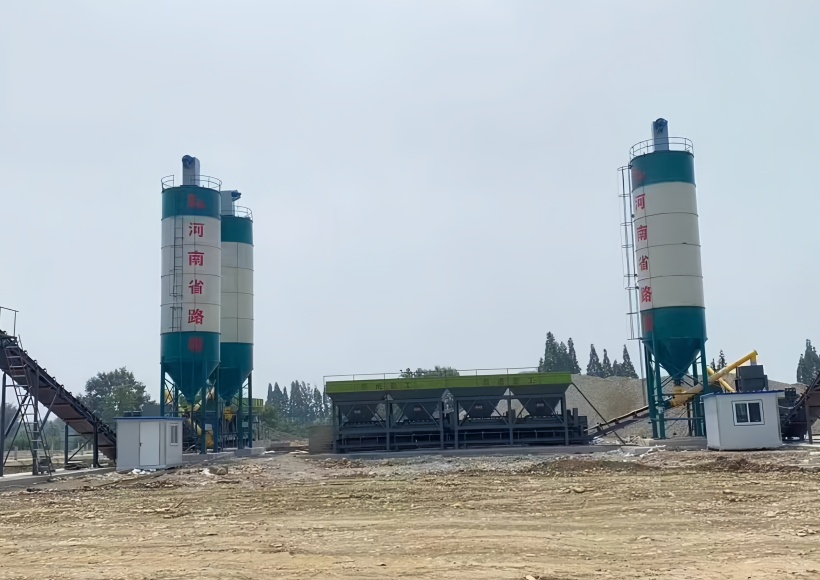In large-scale infrastructure projects such as highways, railways, and airports, stabilized soil mixing plants are key equipment for producing the water-stabilized layer mix. For buyers, the most critical question is often, "How much does a stabilized soil mixing plant cost?" The answer varies; price depends primarily on a variety of factors: model, configuration, and manufacturer.
1. Core Determinants: The Impact of Model and Output on Price
The model of a stabilized soil mixing plant directly determines its theoretical production capacity and price range. Models are typically differentiated by hourly output (tons/hour), which forms the basis of the price tier.
Small Mixing Plants (WBZ300-WBZ400)
This series of mixing plants has an hourly output of 300 to 400 tons, a compact design, and a low investment cost. Prices typically range from RMB 300,000 to 400,000. They are ideal for county and township roads, small municipal projects, or projects requiring frequent relocation, offering flexibility and low operating costs.
Medium-sized concrete mixing plants (WBZ500-WBZ600)
Medium-sized concrete mixing plants are the most widely used type, with an hourly output of 500 to 600 tons, meeting the base construction needs of most national, provincial, and expressway highways. Priced at approximately 300,000 to 500,000 RMB, they offer an optimal balance of efficiency, stability, and affordability
Large-sized concrete mixing plants (WBZ800 and above)
For large-scale projects such as expressways, ports, and airports, their output can reach over 800 tons per hour, or even exceed 1,000 tons. These concrete mixing plants are large and highly automated, with starting prices typically exceeding 400,000 RMB, while fully equipped high-end models can reach over one million RMB.
Professional Tip: The first principle when choosing a concrete mixing plant is to "select based on needs." An accurate assessment of the project's total material requirements, construction schedule, and future expansion potential is the first step in determining the right concrete mixing plant. Oversized equipment leads to idle equipment and wasted capital, while undersized equipment can hinder project completion on time.

II. Key to Price Fluctuations: Detailed Explanation of Configuration Selection
The price of the same concrete batching plant can vary by over 50% depending on its configuration. Configuration is a key factor influencing equipment performance, environmental friendliness, degree of automation, and long-term operating costs.
1. Mixer Type: The Core of the Equipment
Twin-shaft forced concrete mixers are the mainstream in the market, offering powerful, uniform, and efficient mixing. They are suitable for a variety of stabilized soil materials and are the standard configuration. The size, material (e.g., thickness of wear-resistant steel plate), and drive system quality of the mixer directly determine price variations of 10-20%.
2. Aggregate Silos and Batching System
A standard configuration typically includes four silos for storing aggregates of varying particle sizes. Each additional silo increases the cost by 5-10%. Belt batchers utilize variable speed control, making them more precise and efficient than traditional bucket batchers, but they also cost 15-25% more.
3. Key Components of the Powder Supply System
The capacity (100 tons, 150 tons) and number of cement silos determine the powder storage capacity. The wear resistance, sealing, and conveying capacity of the screw conveyor material affect the price and long-term maintenance costs. A high-quality system reduces maintenance downtime and improves overall profitability.
4. Control System: The Intelligent Brain of the Equipment
- Simple Control: Provides only basic start/stop and weighing functions and is the lowest price.
- Semi-Automatic Control: Features recipe storage and automatic drop compensation, and is the mainstream configuration.
- Fully Automatic Control: Utilizes an industrial computer and PLC for fully automated production, data logging, and remote monitoring. While this configuration carries the highest price, it significantly improves management efficiency and mix ratio accuracy.
5. Environmental Protection: An Increasingly Important Value-Added Feature
- Non-Environmental Control: Open-source production offers the lowest initial price but carries the risk of environmental penalties.
- Standard Environmental Control: Includes a partially enclosed main unit and a pulse bag dust collector, a requirement for most construction sites.
- High-end environmental control station: fully enclosed steel structure, equipped with efficient